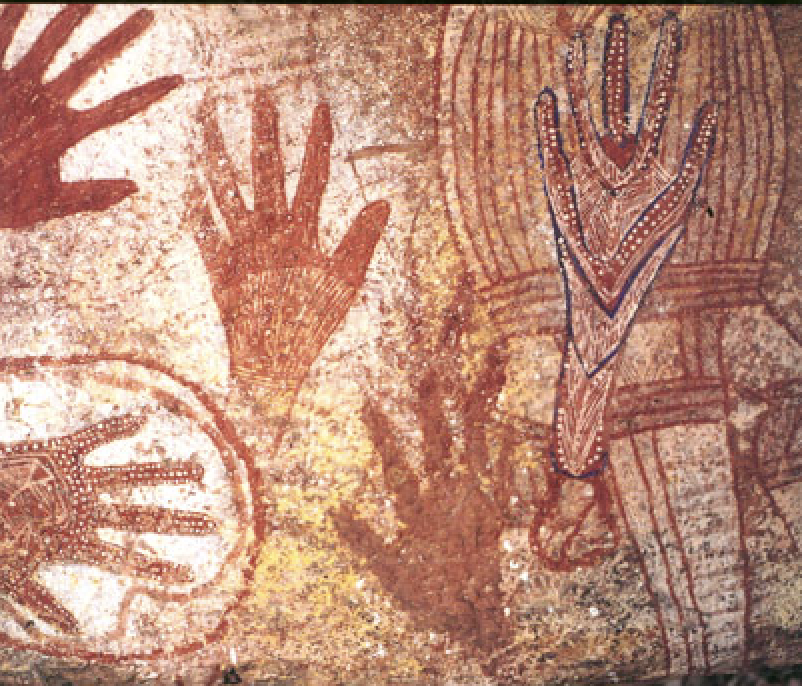Australian Aboriginal Stencil Art
Stencil art is the name of the style of art found in many caves along coastal Australia and is usually depicted as a hand print which is usually located in amongst a group of handprints. The handprint represents the signature of the individual who placed it there. Usually when examined carefully, there are actually many layers of these prints on the wall surface.
This technique is accomplished by using a ground ochre suspended in water. The person who wants to leave the handprint takes this suspension into their mouth and then blows it from their mouth over the hand placed on the wall or ceiling surface. This creates a splatter painting but clearly shows the outline of the hand which was placed on the wall. The hand of the initiated elder becomes the stencil.
These cave and wall paintings can be found in almost all of Australia and today are protected in most areas. In some areas initiated men (Community Elders) who are the traditional appointed care takers of the sites will refresh some of the stencil paintings making identifying the actual age of the paintings very difficult as this restorative practice has likely gone on for many thousands of years.
The future of this practice is however in danger as fewer men are becoming initiated thus not fully sharing in their cultural secrets. It is only the initiated men that are allowed to restore these paintings and when they are gone the restoration will stop as it already has in many areas where there are no longer any initiated men or men with any cultural identity remaining.
Fortunately the Federal Government recognises the cultural importance of the stencil art sites and is attempting to stabilize and protect these sites by employing local men as Park Rangers creating an economic stimulus to take pride in long lost history.

© Copyright 2010 All Rights Reserved No Reproduction Permitted Without Permission
Address : Michael Moriarty, PO Box 14, Berry Springs, NT, 0838, Australia